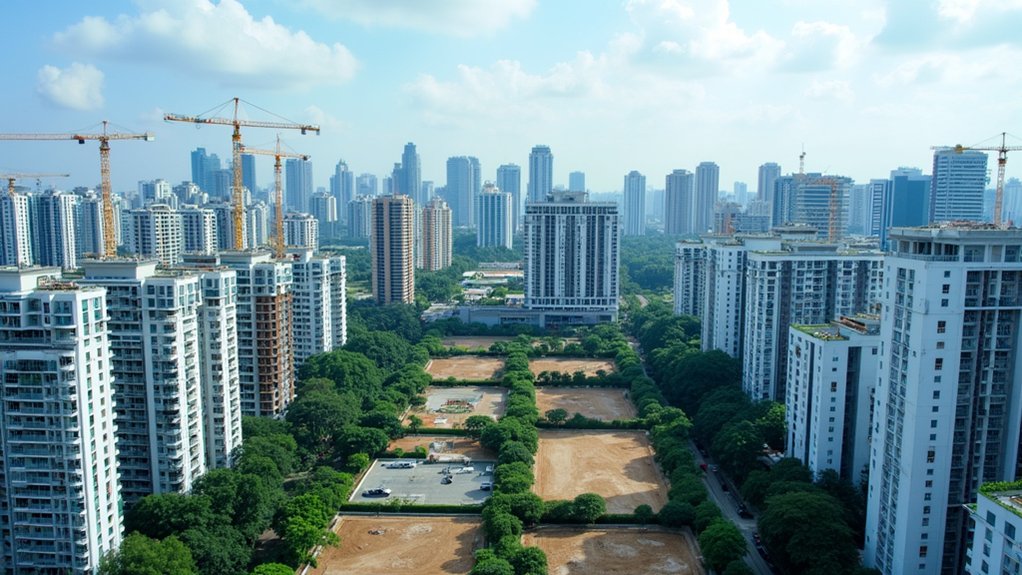How constrained has Singapore’s private housing market become? The H1 2026 Government Land Sales (GLS) Confirmed List has been reduced to 4,500 units, representing a 4.8% decrease from H2 2025’s 4,725 units, signaling intensifying supply restrictions within the residential development sector.
This strategic reduction reflects deliberate policy intervention designed to manage housing supply while maintaining price stability across the private residential market.
The underlying supply pressures stem from multiple converging factors. Private housing completions are projected at only 5,300 units in 2025 and 7,600 units in 2026, both substantially below the historical 10-year average of 12,000 units annually.
Private housing completions of 5,300 units in 2025 and 7,600 units in 2026 fall substantially short of the historical 10-year average of 12,000 units annually.
Simultaneously, unsold inventory has declined to 18,270 units in Q1 2025, a multi-year low that contrasts sharply with the previous decade’s average of 22,800 units, intensifying scarcity conditions. Secondary sales momentum has strengthened from the 4,212 units recorded in Q3 2024, demonstrating robust resale activity in the constrained supply environment.
The broader pipeline supply, comprising primarily uncompleted projects with approximately 55,600 units including Executive Condominiums potentially distributed across several years, provides insufficient near-term relief. The government’s polycentric decentralization strategy through urban development plans like the URA Draft Master Plan 2025 deliberately prioritizes strategic land allocation to support long-term resilient growth over immediate supply expansion. Global trends show that residential real estate value stands at $11.4 trillion, highlighting the significance of housing market dynamics across international markets.
Government policy mechanisms deliberately reinforce supply constraints through GLS program adjustments and strategic land release management.
These measures aim to prevent oversupply while moderating housing affordability pressures, creating conditions that sustain seller’s market dynamics.
The constrained supply environment directly supports price resilience, with private home prices anticipated to increase 4-5% in 2025, building upon 2024’s 3.9% appreciation.
Although 2026 price growth projections range from 1-5%, the limited new completions and continuing demand patterns position prices above 2%, indicating sustained upward momentum despite gradual moderation.
Demand remains robust, driven by resilient buyer sentiment concentrated in well-located, competitively priced projects, pent-up demand released following mortgage rate stabilization, and sustained local household liquidity.
Upgrader demand from existing homeowners and steady foreign interest in central locations further reinforce residential demand.
Primary home sales demonstrated resilience with 3,375 new units sold in Q1 2025, nearly tripling Q1 2024 volumes, while 2025 new home sales are expected within the 7,000 to 10,000 unit range.
The combination of restricted land supply, insufficient new completions, and sustained demand creates a structural imbalance that supports continued price stability and seller-favorable market conditions throughout the medium term.





